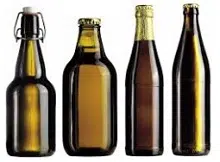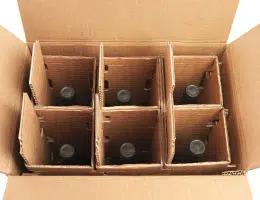 If we stay with the first meaning of packaging mentioned in the dictionary of the Royal Spanish Academy ( RAE ), the term refers to the act and result of packaging : placing a liquid or other substance in a container.
If we stay with the first meaning of packaging mentioned in the dictionary of the Royal Spanish Academy ( RAE ), the term refers to the act and result of packaging : placing a liquid or other substance in a container.
The most common use of the notion, however, is associated with the container itself. That is to say, a container is an object that allows the storage and transportation of certain products .
There are multiple types of packaging since the packaged elements can be very diverse. Glass or plastic bottles and tetrabriks , for example, are the most common beverage containers. Cookies, for their part, are usually sold in plastic, paper or cardboard packaging .
The characteristics of the packaging depend on what it contains, since it must guarantee adequate hoarding, protection, handling and distribution of the product . A soft drink or soda, for example, cannot be packaged in paper since the container would get wet and spoil. More fragile goods, on the other hand, need impact-resistant packaging.
The material used to manufacture each type of packaging is a fundamental point, which not only affects the quality and conservation of the product it contains, but also sets a trend and identifies it with an era. For example, while until the late 1980s yogurt used to be distributed in glass containers, today plastic is used.
Caring for the environment , on the other hand, requires the use of reusable or recyclable packaging to minimize waste generation. Glass bottles, in this sense, are valuable since they can be refilled after being subjected to a comprehensive cleaning and disinfection process. Some plastic bottles can also be recycled: they are melted down and then used as raw materials for the production of new packaging or other products.
 Depending on the criteria applied, there are several ways to classify packaging. One of them is based on the distance that exists between them and the products they contain, and this gives rise to the following three types: primary, secondary and tertiary . The primary packaging is in direct contact with the product, so that it not only serves to contain it but also to protect it.
Depending on the criteria applied, there are several ways to classify packaging. One of them is based on the distance that exists between them and the products they contain, and this gives rise to the following three types: primary, secondary and tertiary . The primary packaging is in direct contact with the product, so that it not only serves to contain it but also to protect it.
In a commercial store, each primary packaging corresponds to a unit of the product in question and is aimed at the final consumer , meaning it is not intended for wholesalers. Although it can partially or totally cover the product, it guarantees that the product cannot be modified without the container being opened. Soft drinks are sold in this type of packaging.
On the other hand, we have secondary packaging , which is also known as collective and is used to contain one or more primary containers, with the aim of protecting them during the commercial distribution process. In a store, we can find it in packages of several units, either for sale to the final consumer or to keep them near the shelves for eventual replacement. The transparent plastic films that group together several bottles of mineral water are a clear example of this type of packaging.
Tertiary packaging , finally, is that which is used to transport or group containers of either of the previous two types in a container that provides protection in the vehicles that carry them throughout the commercial distribution network. They are manufactured with the aim of making the transportation and handling of many units easier, minimizing the probabilities of damage and alterations. Two clear examples of this type of packaging are reusable plastic boxes and pallets.
